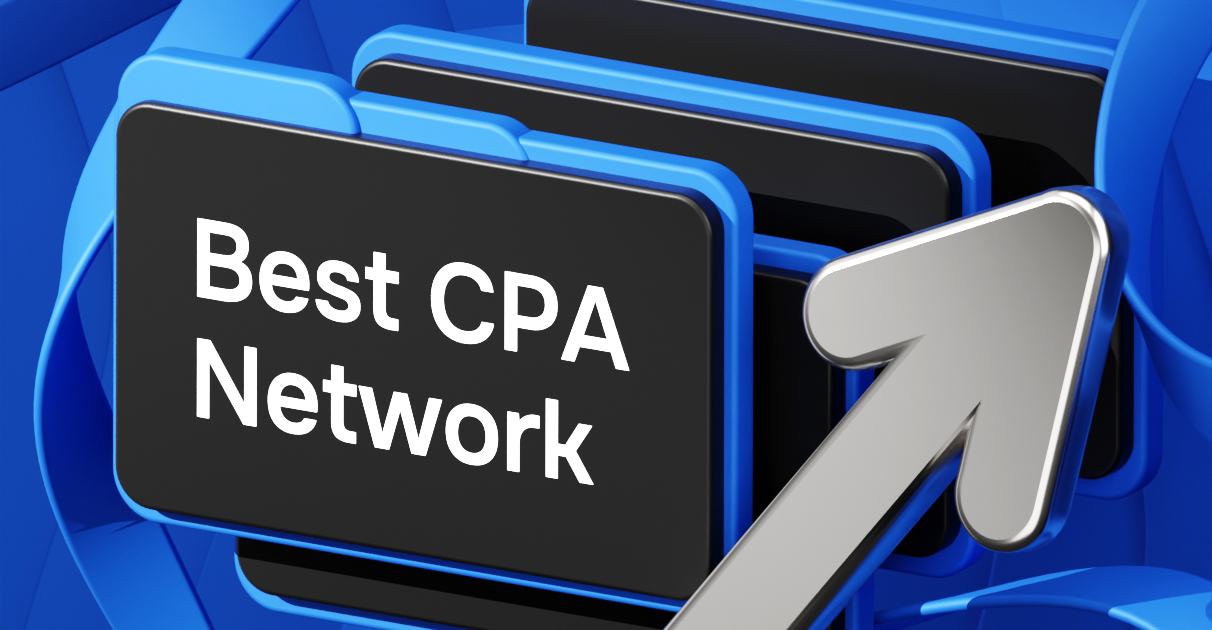
Credit & Debit Affiliate Program
The best CPA offers for credit card signups in 2025 depend on GEO, issuer policy, user profile (prime vs. subprime), and allowed traffic (SEO/email/social) from a network with clear targeting rules, responsive managers, stable EPC reporting, and scaling.
Key takeaways
- Fit over hype. Evaluate offers by GEO + issuer rules + allowed traffic + audience profile; avoid “one best list” thinking.
- Bank-safe wording wins. No “pre-approved/guaranteed”; use “check eligibility,” disclose typical fees/APR ranges.
- Pre-lander = approvals. Education + eligibility on a pre-lander usually improves form completion and approval mix.
- Parallel monetization. When cards under-approve, route users to credit repair or debt consolidation paths that match their profile.
- Operate by metrics. Track Impr → CTR → Pre-lander CR → Apply → Approval rate → EPC. Iterate one lever at a time.
- Documentation. Keep screenshots of allowed-traffic policies and banned terms for each issuer/offer.
What counts as credit & debt affiliate offers (and payouts)
Credit cards. These are issuer-approved signups, including secured/unsecured, starter/prime, co-brands. Payouts may be CPL (qualified app) or CPA (approved signup), often with an issuer verification lag.
Credit repair. CPL/CPA on booked consults or plan starts; often better fit for users with low scores or recent denials.
Debt consolidation/relief. CPL/CPS on qualified consults; requires careful intake and transparent, compliant wording.
Common payout models:
- Qualified application (CPL/CPA): valid, complete app submitted.
- Approved signup: paid when the issuer approves.
- Qualified consult/sale (repair/consolidation): booked consult or plan activation.
Expect delayed confirmations for cards—plan reporting and cashflow around that lag.
Approval drivers: Eligibility (income, score bands, recent delinquencies), correct product matching (secured vs prime), and friction (mobile form UX). Content clarity and accurate expectations reduce denials.
Work with compliant credit & debt offers on Leadgid — Sign up.
Choosing offers & networks (bank-safe criteria)
Use a scoring sheet instead of chasing brand names:
- Policy visibility. Do’s/don’ts written down, list of banned phrases, and sample compliant copy.
- Allowed traffic detail. Explicit rules for SEO, permissioned email, social/native; landing rules (direct vs. pre-lander).
- Audience fit. Products across the spectrum (secured, starter cards, repair, consolidation) so you can route users correctly.
- Payout stability & currencies. Clear schedule, currency options, and clawback rules.
- Reporting & API. Real-time dashboards, exports, postbacks; API for automated QA.
- Manager support. Fast feedback on denials, guidance on GEO-specific wording.
- Localization. Currency, APR ranges, fee terminology per country.
For newcomers, start with a broad catalogue and a manager who will review your funnel and share anonymized approval feedback.
Allowed traffic & compliant flows (cards/repair/debt)
SEO (if allowed). Build intent pages (“best secured cards in [GEO]”, “how to rebuild credit”) that set expectations. Send users to a pre-lander with eligibility bullets and APR/fee guidance before the issuer page.
Email (permissioned, if allowed). Educational sequence (utilization, payment timing, fees) → pre-lander → issuer. Suppress non-engagers; comply with local email laws.
Social/UGC (if allowed). Educational shorts (benefits/requirements) → link-in-bio → pre-lander. Keep overlays and captions compliant.
Wording guardrails. Avoid “guaranteed”, “pre-approved”, or unverified APR/fee promises. Prefer “check eligibility”, “typical ranges”, “subject to issuer approval”. Link issuer T&Cs; add responsible-borrowing/credit-education notes.
Funnel patterns that work (i.e. How to promote credit card offers as an affiliate)
- Card comparison hub → filter by annual fee/APR/secured; each card tile links to a pre-lander with eligibility bullets and “how to apply safely” notes.
- Decision explainer: “Repair vs consolidation vs secured card” → three tiles leading to the right intake. Users denied for cards get routed to repair/consolidation.
- Bad-credit path: content hub for rebuilding credit (secured cards, budgeting basics, on-time payment calendar) → repair consult offer → later card upgrade content.
Benchmarks & optimization (cards vs repair vs debt)
Metrics to track weekly aka starting ranges (calibration, not promises; adjust by GEO/source):
- CTR (SEO cards): 2–5%
- Pre-lander CR: 15–30% (education + eligibility lifts this)
- Apply rate: 25–45% from pre-lander to issuer/app
- Approval rate: varies by product/profile; secured > starter > prime
- EPC: build a week-1 baseline; trend it up via approval mix
Levers that lift the average EPC for credit and debt CPA offers:
- Match product to profile (secured for thin/no credit; repair/consolidation for high utilization/late payments).
- Tighten wording to bank-safe language; remove friction on mobile; shorten forms.
- Ask weekly for top denial reasons; update eligibility bullets accordingly.
- Split content by intent (apply now vs. learn/repair first).
Mini “How-to” — first 5 steps
- Pick one GEO + one sub-vertical (cards or repair or consolidation). Don’t mix tests at the start.
- Confirm allowed traffic in writing for that GEO; list banned phrases in your doc; share with your team/designer.
- Build the pre-lander: eligibility bullets, fees/APR ranges in plain language, issuer disclaimers, links to T&Cs, responsible-borrowing note.
- Launch one channel and angle for 7–14 days; budget for issuer lag; monitor the full metric chain.
- Weekly review with your manager: denials, drop-offs, device issues; route non-qualified users to repair/consolidation; iterate one change at a time.
Comparison snapshot — table notes
Here is a quick decision aid that replaces “brand lists” with fit signals (GEO, policy clarity, audience coverage, support).
Columns to include:
- Network (name of it)
- Verticals and specialization (be it cards or credit repair CPA networks for affiliates)
- GEOs (examples)
- Allowed traffic* (SEO/email/social; pre-lander rules)
- Payout schedule/currencies (weekly/biweekly/bank transfer/crypto)
- Reporting & API (dashboards, exports, postbacks, API)
- Manager support (hours, languages)
- Use when (e.g., subprime routing, API-heavy teams)
* Always confirm at the offer level.
|
Network / Program |
Specialization |
GEO / Notes |
Extras / Tools / Tags |
|
Bankrate Credit Cards Network (CreditCards.com) |
Credit-card affiliate network |
USA (issuer-backed) |
Co-brand sites, XML/RSS/API feeds, strict compliance |
|
CommissionSoup (Bulldog Media Group) |
Credit cards + finance verticals |
USA |
Dedicated card network, separate “Credit Cards” showcase |
|
FlexOffers |
Large finance catalog + banking programs |
Multi-GEO |
Broad aggregator with finance category; offers cards, banks |
|
CJ (Financial Services / Fintech) |
Banks, Cards, Fintech brands (USAA, Ally, Barclays) |
Global |
Developer portal + advanced API, many card issuers |
|
Awin |
Cards & credit brands (Credit Karma, QuinStreet etc.) |
Global |
Easy UI, cookie-term visibility, publisher tools |
|
Fintel Connect |
Finance-exclusive network (bank & fintech) |
N. America (core) + global |
Compliance monitoring suite, fin-brand specialist |
|
financeAds |
Banking / Cards / Insurance |
EU (10+ markets) |
Premium EU network for finance verticals |
|
Admitad – Credit Cards |
Aggregator of card offers by market |
Multi-GEO |
Multi-GEO feeds of card offers + tracking tools |
|
CardRatings (Publisher Network) |
In-house credit-card aggregator + affiliate program |
USA |
Co-branded widgets & offer feeds for publishers |
|
LinkConnector |
General network with financial verticals |
Global |
Strong tech stack, API integrations, good fallback option |
|
Rakuten Advertising |
General / Finance brands |
Global |
Accepts financial publishers; high authority but stricter compliance. |
|
Impact Radius |
Finance / Credit cards / Lending apps |
Global |
Advanced tracking + API; often hosts card issuers (Capital One, Chase). |
|
Partnerize |
Banking / Insurance / Fintech |
Global |
Used by banks for compliant partnership management. |
|
Pepperjam (Ascend by Partnerize) |
Retail + Financial Services |
N. America |
Common for card sign-ups and rewards partners. |
|
TradeDoubler |
General CPA / CPS incl. Finance |
EU |
Multi-vertical platform; supports card/loan campaigns in EU. |
|
Finance Online |
Publisher network / reviews |
Global |
Acts as content platform with affiliate back-end. |
|
Admitad Lite |
Quick-onboarding tool for new affiliates |
Multi-GEO |
Lower entry barrier for Tier-2 GEO tests. |
Common mistakes & quick fixes
- “Pre-approved” language. Replace with “check eligibility”; add issuer disclaimers and APR/fee ranges.
- Direct-linking without education. Insert a pre-lander to set expectations and reduce denials.
- Single-track monetization. If card approvals stay low, route to repair or consolidation instead of burning the budget.
- Ignoring issuer lag. Communicate that approvals post later; align reporting windows.
- Friction on mobile. Compress assets, simplify forms, fix tap targets; monitor drop-offs by device.
- No policy receipts. Save screenshots/PDFs of allowed-traffic policies and banned terms per offer.
Ready to launch a bank-safe flow? Start with a pre-lander and issuer-approved wording. Leadgid helps you implement and measure.
FAQ
- Your choice here depends on GEO, issuer policies, user profile, and allowed traffic. Start with networks that provide bank-safe wording, responsive managers, and stable reporting.
- Use comparison hubs and compliant copy. Route users via a pre-lander (fees/APR ranges, eligibility, disclosures) before the issuer page; test one angle at a time.
- There are no such networks specializing on bad loans, but even such traffic may be monetized, if you focus on secured cards, credit repair, and debt consolidation flows; avoid guarantees, use eligibility-first language.
- It can be for users with high utilization or multiple debts; success depends on compliant wording, precise intake, and GEO-specific rules.
- EPC varies by GEO, approval mix, and friction. Establish a baseline, then raise it via eligibility matching, compliant copy, and mobile UX.
